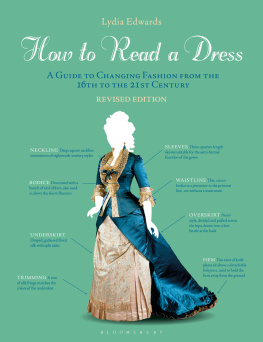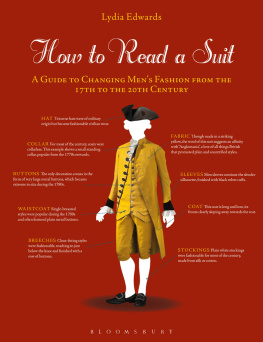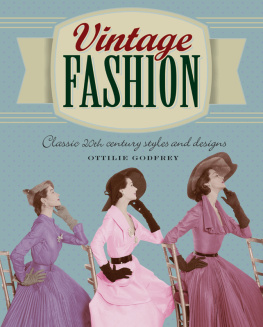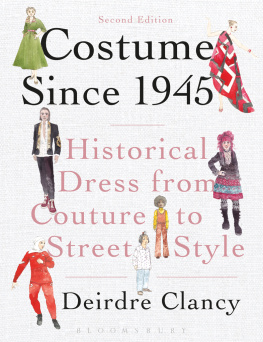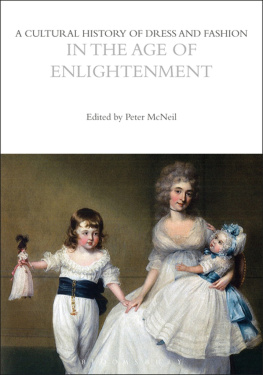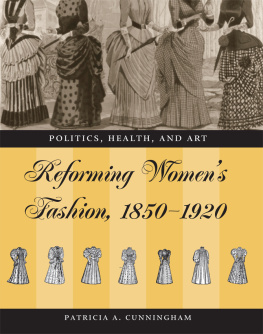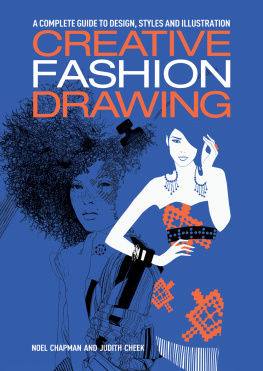
BLOOMSBURY VISUAL ARTS
Bloomsbury Publishing Plc
50 Bedford Square, London, WC1B 3DP, UK
1385 Broadway, New York, NY 10018, USA
29 Earlsfort Terrace, Dublin 2, Ireland
This electronic edition published in 2021 by Bloomsbury Publishing Plc
BLOOMSBURY, BLOOMSBURY VISUAL ARTS and the Diana logo are trademarks of Bloomsbury Publishing Plc
First edition published in Great Britain 2017
This revised edition published 2021
Copyright Lydia Edwards, 2021
Lydia Edwards has asserted her right under the Copyright, Designs and Patents Act, 1988, to be identified as Author of this work.
For legal purposes the constitute an extension of this copyright page.
Cover image: Reception dress: bodice and skirt, 187778 (silk) by Charles Frederick Worth ( Cincinnati Art Museum/Gift of Mrs Murat Halstead Davidson/Bridgeman Images)
All rights reserved
You may not copy, distribute, transmit, reproduce or otherwise make available this publication (or any part of it) in any form, or by any means (including without limitation electronic, digital, optical, mechanical, photocopying, printing, recording or otherwise), without the prior written permission of the publisher. Any person who does any unauthorised act in relation to this publication may be liable to criminal prosecution and civil claims for damages.
Bloomsbury Publishing Plc does not have any control over, or responsibility for, any third-party websites referred to or in this book. All internet addresses given in this book were correct at the time of going to press. The author and publisher regret any inconvenience caused if addresses have changed or sites have ceased to exist, but can accept no responsibility for any such changes.
A catalogue record for this book is available from the British Library.
A catalog record for this book is available from the Library of Congress.
ISBN: 978-1-3501-7222-7 (HB)
ISBN: 978-1-3501-7221-0 (PB)
ISBN: 978-1-3501-7224-1 (eBook)
ISBN: 978-1-3501-7223-4 (ePDF)
To find out more about our authors and their books please visit www.bloomsbury.com where you will find extracts, author interviews and details of forthcoming events, and to be the first to hear about latest releases and special offers, sign up for our newsletters.
Dedication
For Aaron and Holly
Contents

There are many people to whom I owe deep thanks and gratitude in their assistance with the completion of this book. First, I must thank my editor Frances Arnold, whose consistent expertise, support, and advice has been utterly invaluable. Anna Wright championed the idea in the first place and supported me through writing the first edition. Editorial Assistants Yvonne Thouroude and Rebecca Hamilton provided helpful guidance and information throughout, for which I am very grateful.
Several museums and societies have generously offered their time and expertise as well as the use of beautiful images. Special thanks go to Karin Bohleke from the Fashion Museum and Archives at Shippensburg University for her detailed guidance, advice, feedback, and friendship. Mary West and the team at Swan Guildford Historical Society generously gave many hours of time and care to the project, allowing me to make use of some rare and beautiful garments. Glynis Jones from the Powerhouse Museum in Sydney provided hands-on access to garments and a wealth of expertise. Thanks also to Donna Franklin and Yuki Kihara for generous permission to reproduce images of their beautiful designs.
Love and thanks to my husband Aaron Robotham, for his endless advice and supportand for his beautiful photography, which has been a vital component of the book. Love and gratitude also go to my wonderful parents Chris and Julia, and dear friends Louise Hughes, Nina Levy, Anna Hueppauff, Claudia Lagos, Rodrigo Tobar, Tina Moss, Luke & Liz Davies and Emilie Maguin.
I am very grateful to the Tsoulis, Hueppauff, Levy, and Ksting families for their generous permission to use treasured family photographs, and to Fleur Kingsland at the West Australian Academy of Performing Arts for advice, friendshipand mannequins!
Finally, a huge thanks to everyone who read the first edition of How to Read a Dress. I hope you will find new fashion history fuel within these pages.
The story of the evolution of dress is not as readily accessible as might first be imagined. Books and articles often choose to focus on narrower areas of interest such as a particular era or style, and some function as a wider sociopolitical analysis of how dress adapted and molded to fit contemporary demands. Extraordinary museum collections worldwide are a first and highly precious resource for many researchers and enthusiasts, but most face various inevitable limitations. Chief of these are space, resources, funding, and, more specifically, the necessity (because of loans or conservation requirements) to have a significant number of garments out of the display cases at any one time. Because of this, it can be impossible for visitors to witness a continuous, chronological flow of styles, changing before their eyes in fundamental shape and small details, to produce a comprehensive vision ofquite literallythe evolution of clothes. That is the express intention of this work, which aims to take the reader on a sartorial journey through womens fashion in the Western world, explored in blocks of a few years each and spanning the years 1550 to 2020. The scarce availability of extant (surviving) garments prior to 1550 means that this date has been chosen as a starting point, but there are many publications that consider dress in detail before this point. Books such as Ninya Mikhaila and Jane Malcolm-Daviess

